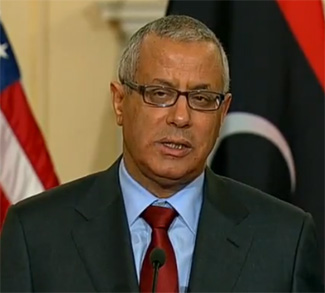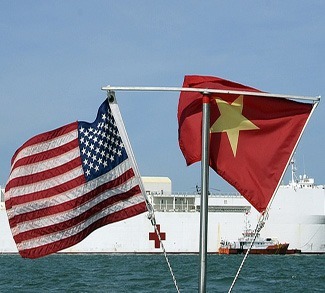An increasing number of South Koreans believe that the country should develop nuclear weapons. According to a recent survey by the state-affiliated Korea Institute for National Unification think-tank, 66% of respondents expressed “support” or “strong support” for an independent nuclear deterrent. In a survey conducted by Gallup Korea in February, 72.8% respondents believed that South Korea should develop its own nuclear weapons.
Thus, 60-70% of South Koreans are in favor of their country developing nuclear weapons. This is because North Korea has become a de facto nuclear weapons state and also because people believe that the Republican presidential candidate Donald Trump poses a risk of reducing or withdrawing U.S. forces from South Korea.
While there is no indication that the ROK government is considering the development of nuclear weapons at present, the fact that the South Koreans support its development to such an extent is significant.
This is not the first time South Korea has considered the possibility of developing nuclear weapons. In the 1970s, Park Chung-hee, a dictatorial president, embarked on a nuclear weapons program before ultimately being reined in by the United States. Little was known about this history, but in recent years, the National Security Archive and the Wilson Center Digital Archive have unearthed the diplomatic archives of South Korea’s nuclear weapons development program and made them available online. Based on these primary sources, this article aims to clarify the history of South Korea’s nuclear weapons program in the 1970s.
Security Anxieties Prompt Seoul to Explore Nuclear Weapons
Why did South Korea attempt to develop nuclear weapons in the first place? The reason lies in the fact that its security environment had deteriorated in the late 1960s and early 1970s. Between 1968 and 1972, there were 722 incidents on the military border with North Korea and 294 incidents in the rear area. Moreover, a series of major incidents related to North Korea occurred in succession, namely the attempted attack on the presidential palace and the Pueblo incident of 1968, and the downing of a US Navy EC-121 aircraft in 1969.
Faced with these provocations, the United States did not retaliate against North Korea, as claimed by the South, instead opting for a restrained response. Furthermore, when the Nixon administration ascended in 1969, the “Nixon Doctrine” was announced, with Secretary of State Henry Kissinger as the main architect. The doctrine emphasized refraining from direct military intervention, as in the Vietnam War, and switched the focus of US foreign policy to indirect military and economic assistance. In practice, the withdrawal of U.S. forces from Asia, including Vietnam, was dramatic: the number of soldiers was reduced from approximately 720,000 in January 1969 to approximately 280,000 in December 1971. U.S. forces in Korea were also reduced from 63,000 to 20,000.
The South Korean president at that time, Park Chung-hee, became anxious about the situation. Park Chung-hee, whose slogan was “self-reliance in national defense,” was forced to respond to an attack from North Korea and the withdrawal of the US troops. Fearing that South Korea may have been abandoned by the United States, the president chose to commence development of nuclear weapons sometime in 1973.
However, South Korea could not acquire the plutonium required to develop nuclear weapons using its own technology and was forced to approach France to import a reprocessing plant. The idea was that South Korea would be able to acquire plutonium by reprocessing spent nuclear fuel, though this technology was only to be used for nuclear power generation. Simultaneously, South Korea attempted to import nuclear power plants from Canada as well.
India Test Reshuffles Nuclear Geopolitics
The situation changed after India conducted a nuclear test in 1974. As fears of nuclear proliferation rose worldwide, the U.S. began to keep a close watch on its allies and other countries to see if they were developing nuclear weapons. Before long, US diplomats and intelligence agencies discovered South Korea’s nuclear weapons program, leading to a diplomatic battle over the program’s future.
The main negotiators were diplomats from the US Embassy in Korea. Foreign policy toward South Korea was designed, and detailed instructions were given by the State Department and National Security Council. Kissinger established a foreign policy that did not allow South Korea to develop nuclear weapons. However, in its negotiations with South Korea, the U.S. never directly demanded the country stop its nuclear weapons development program. It only told the ROK that it should stop importing reprocessing plants from France, all while continuing to pretend that it did not know about South Korea’s nuclear weapons program. The ROK side never mentioned that it was trying to develop nuclear weapons. Both sides negotiated with each other while pretending to be unaware of the plan.
The U.S. made diplomatic efforts not only toward South Korea, but also toward France and Canada. France was informed that South Korea was attempting to develop nuclear weapons, and that the U.S. would attempt to put a halt to South Korea’s plans. France agreed with the US policy, although it would not cancel the export program on its own. Kissinger also informed Canada of South Korea’s plans and requested that it not reprocess spent nuclear fuel from Canadian nuclear power plants, to prevent South Korea from acquiring plutonium. Canada, aware of the danger of the situation, agreed and placed conditions on its contract with Seoul. Thus, the U.S. created a diplomatic environment to thwart South Korea’s nuclear weapons ambitions.
Historical Echoes of a Nuclear South Korea
Owing to a lack of historical documents from South Korea, it is difficult to specify when Seoul abandoned its nuclear weapons development. The import of a reprocessing plant from France was abandoned in January 1976. It is safe to assume that the South Korea’s nuclear weapons program had been written off as a failure at that point. As soon as South Korea abandoned its imports from France, the U.S. promised technical cooperation in the field of nuclear energy.
South Korea’s dream of developing nuclear weapons was destroyed in the 1970s. US diplomatic documents reveal that it was difficult for the ROK to carry out its nuclear weapons development under the watchful eye of Washington. The secret plans of the ROK were all but hidden from US intelligence.
However, there were, indeed, new nuclear testing countries, such as India, at that time, and above all, the Nuclear Nonproliferation Treaty had just been established, so nuclear nonproliferation norms were not as strong as they are today. Thus, there was a distinct possibility that South Korea may have succeeded in developing nuclear weapons in the 1970s under different circumstances.
Unlike the authoritarian South Korea of the 1970s, today’s South Korea has achieved economic growth and joined a group of developed countries. It is integrated into the international economy, provides humanitarian aid to other countries and is a guardian of the liberal international order. Although the probability of South Korea embarking on a nuclear weapons development program is low, we must not forget that an ally which feels threatened by abandonment by the United States will do whatever it takes to guarantee its own security.
Kwanghoon Han is a Special Fellow for Japan Society for the Promotion of Science, specializing in international relations in East Asia.




